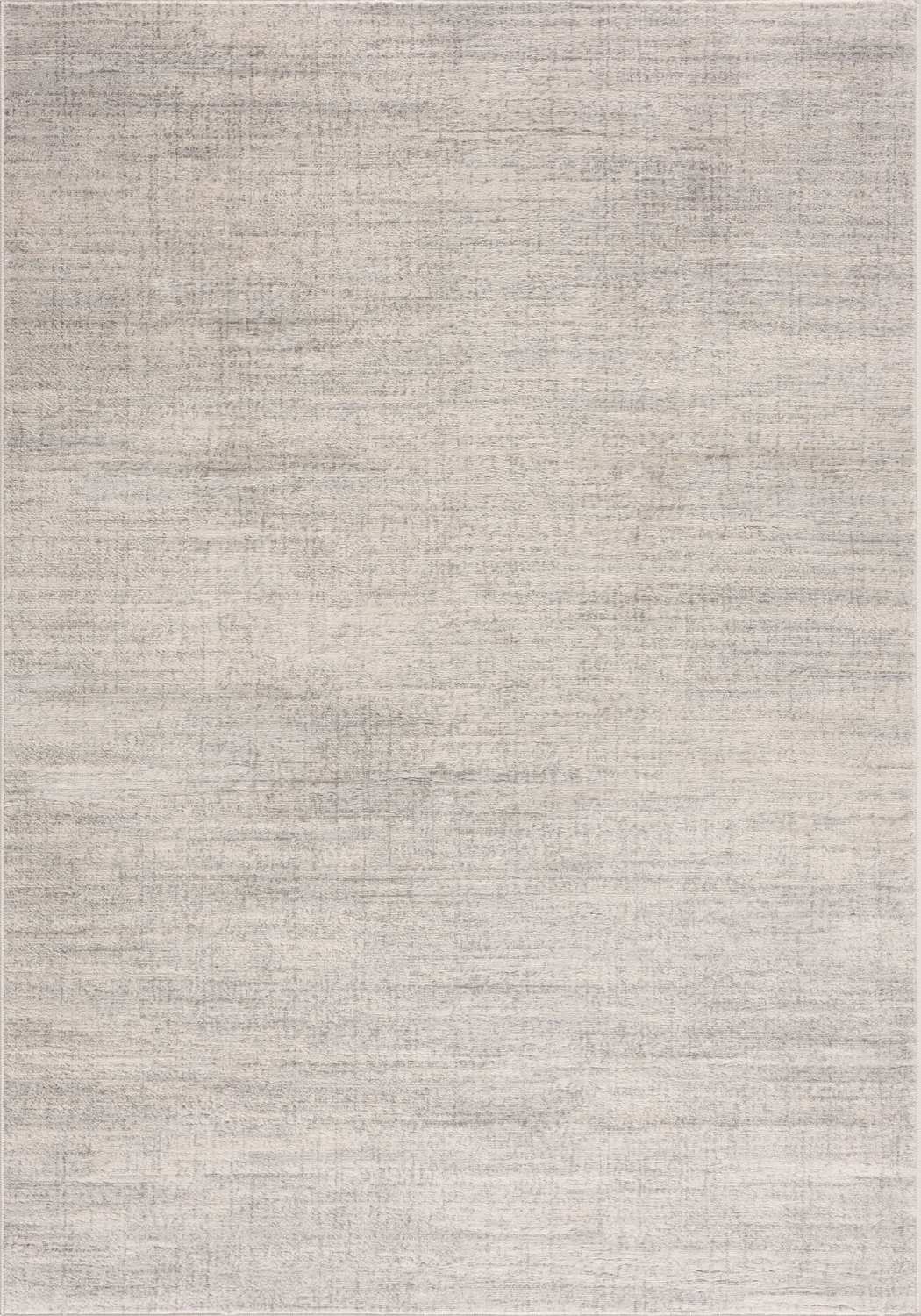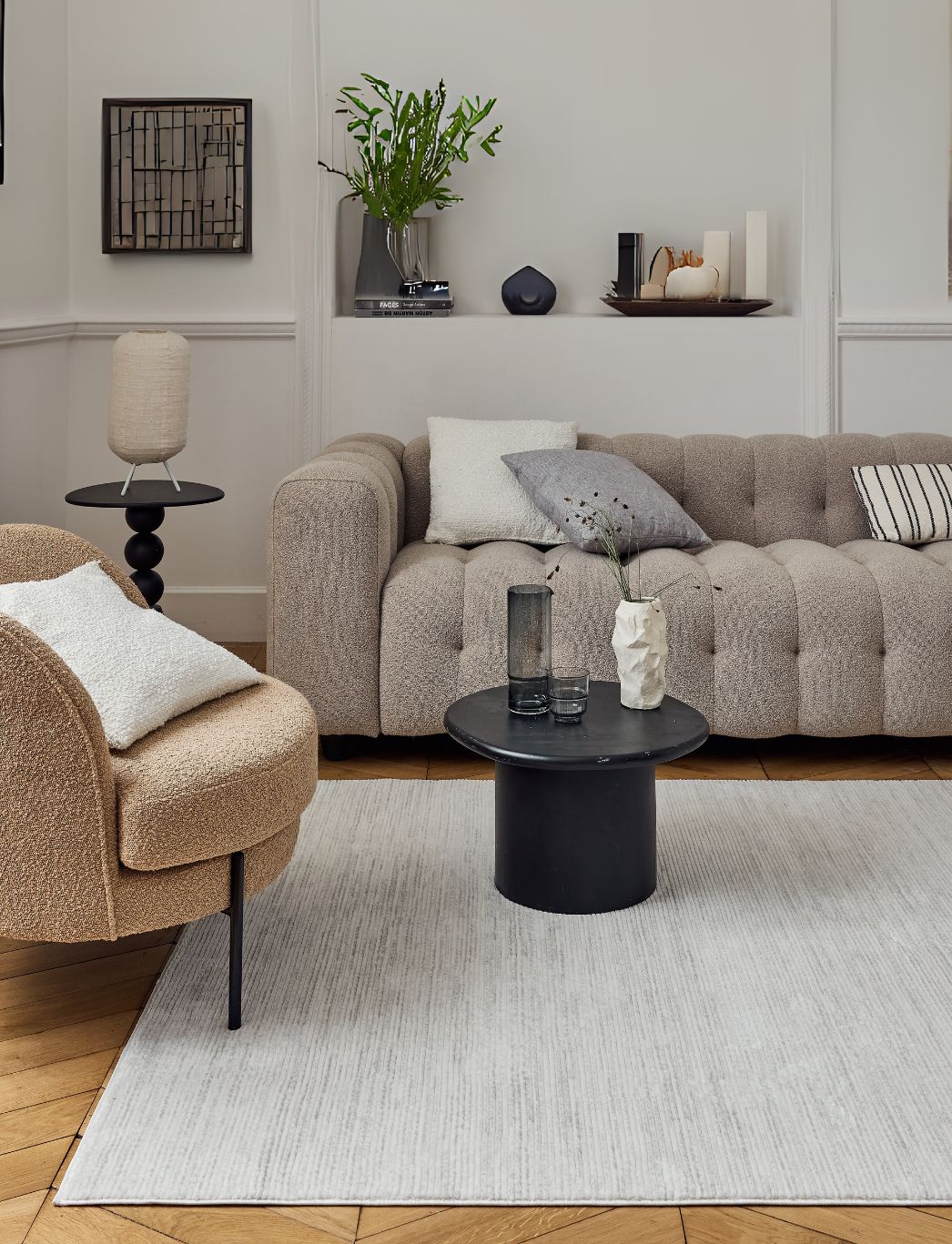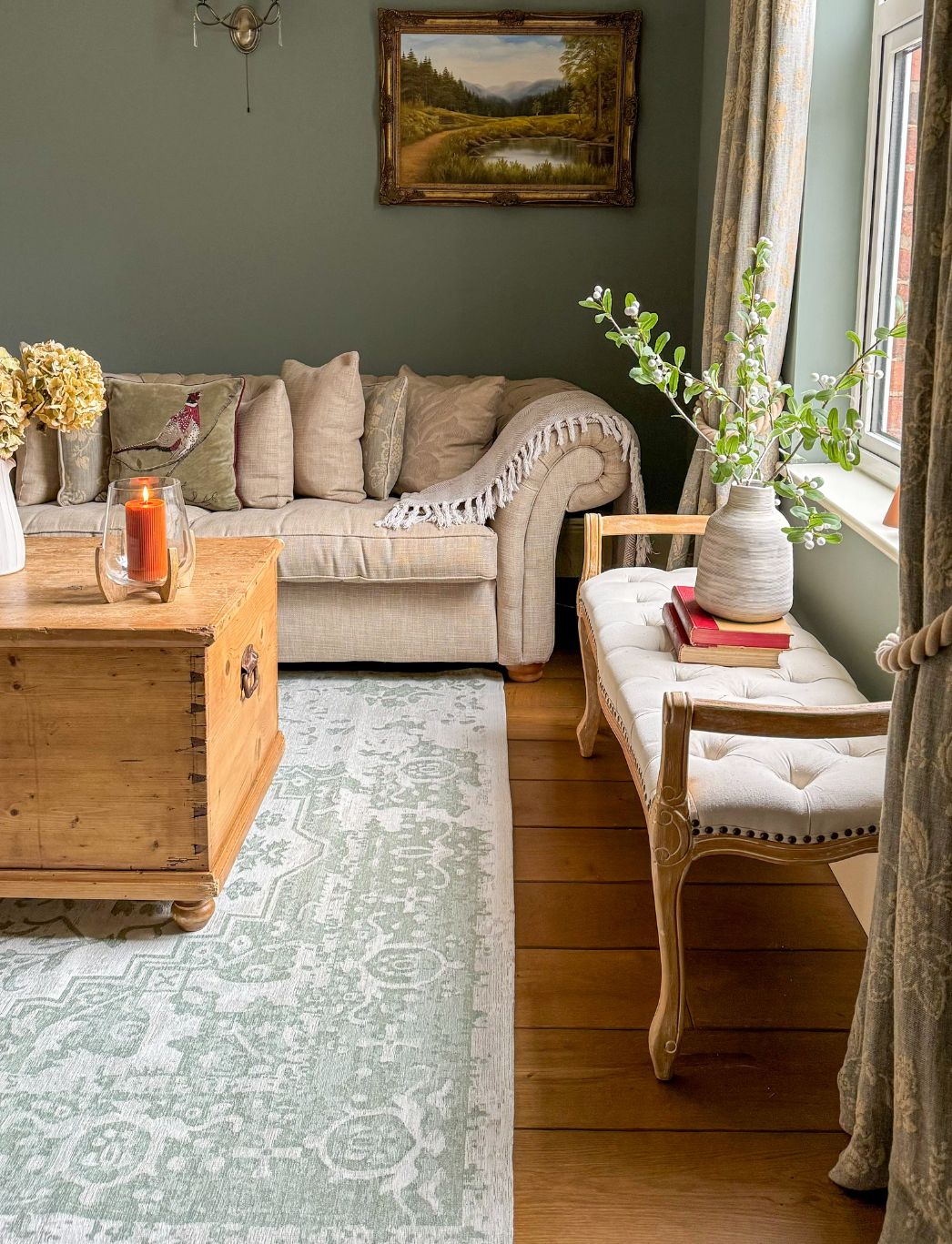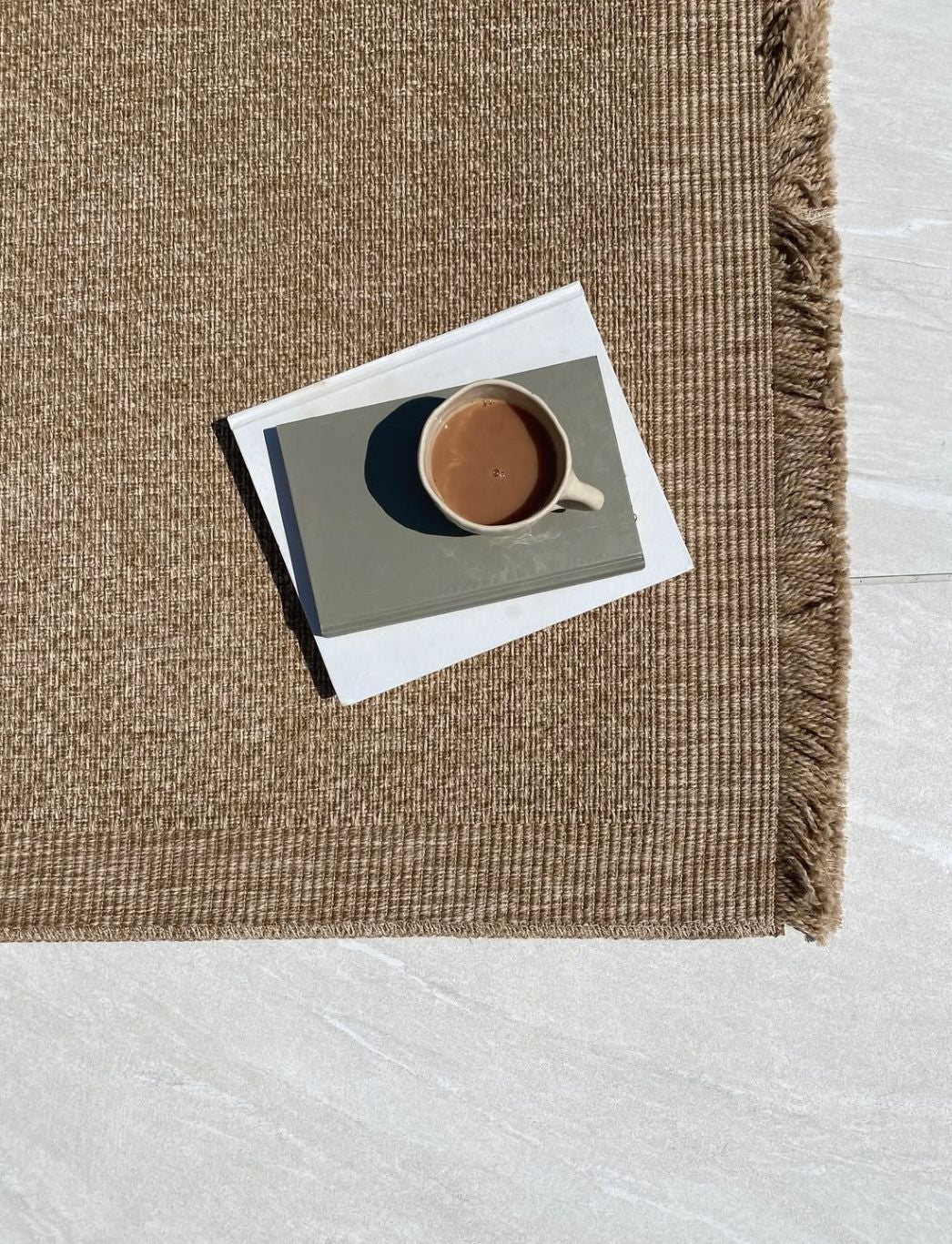Rug Manufacturing

Are you curious about different methods and techniques of rug manufacturing? We have written this article to give you a better understanding of the methods of rug manufacturing involved in techniques and material.
The rug as we know it today has been with us for years, and to begin with, it was something that was produced for personal use, to provide warmth and protection in the houses. The technique of knotting and weaving rug has developed over the years and the motifs became more and more detailed. It was nevertheless still a unique handicraft for private use.
Hand-Made Rugs

Loom woven rugs( hand-made), regardless of the weaving technique always have in common a warp and a weft usually made from jute and/or cotton. The warp is the vertical running strings that make up the length of the rug and the weft is the interwoven thread that runs across the width holding the structure of the rug together while providing a firm anchor base for the visible pile on the surface of the rug.
Having to only use 2 pedals on the loom is relatively easier to wove which cuts down on mistakes that can easily happen, that require a lot of work to fix if you do not notice it immediately.
Hand-knotted rugs can take months and even years because it requires lots of effort on a single rug, which is also the main reason that they are significantly more expensive than machine-made rugs.
Machine-made Rugs
In the 19th century, as industrialism gained momentum, the loom was also being developed, becoming more and more automated. This meant that more industrialised rug manufacturing could begin and in England, machine-knotted rugs were being produced on a major scale, in places like Axminster and Wilton, which is also the origin of these famous carpet types.
Over the years, production techniques have become more sophisticated and today most rugs on the market are machine-knotted.
Today’s machine-knotted rugs are of high quality and a lot of the time it requires a trained eye to see the difference between a hand-knotted carpet and one produced mechanically. If you were to point out the biggest difference, it would be that machine-knotted rugs lack the soul behind the artwork that hand-knotted carpets have.
Production Techniques
There are major differences in the production process between hand-knotted carpets and machine-knotted rugs.
Machine-knotted rugs are produced through thousands of reels of the thread being fed into one giant mechanical loom, which quickly weaves the rug according to a chosen pattern. During production, which is carried out in fixed widths, different patterns and sizes can be produced simultaneously, which means minimal material spillage once the machine is running.
There are however certain limitations, including the fact that only a certain number of colours can be used in one rug; usually between 8 and 10 colours can be combined and screened to produce a wider colour spectrum.
Once the rugs have been woven, the various patterns and sizes are cut apart, after which they are trimmed/edged for the best possible durability.
Some rugs are also decorated with fringes afterwards, which are sewn onto the short ends, as opposed to the fringes being part of the rug’s warp threads as is the case in hand-knotted carpets.
Producing a machine-knotted rugs takes approx. one hour depending on size, compared to a hand-knotted carpet which can take months and even years, which is also the main reason that machine-knotted rugs are significantly cheaper.
By far the most popular weaving method for rugs in Europe and America is the Wilton weave. The modern Wilton loom is fed by thousands of creels of yarn usually in up to eight different colours. The new high-speed Wilton looms produce the rugs faster because they use a face to face weaving technique. It weaves two backing with a single pile sandwiched between them, once woven the patterned or plain surface is split to create identical mirror images of the other. All in all the technique not only allows faster production, with the computerised jacquards it gives a vast diversity of design and rug sizes.

Various Range of Rugs
Today there is an enormous range to choose from when it comes to machine-knotted rugs, both about models and to quality. Choose from modern designs in a range of different colours and oriental rugs with a range of different patterns. As production is mechanical, it is also easier to produce smaller collections quickly.
Size-wise, the range is broad and it is usually easy to find the right rug in the desired size. Thanks to efficient rug manufacturing, the price of machine-knotted rugs is lower, which makes it possible to switch out rugs at home more often.
Materials

Common materials in machine-knotted rugs are polypropylenes, wool, viscose and chenille.
Machine-knotted rugs are currently available in a range of different materials and material combinations. There are rugs produced mechanically in natural materials, such as wool and cotton, but also synthetic fibres and materials are also common. Development is constant and rug materials have started to appear that are more or less impossible to stain, but these are currently still relatively expensive. All materials have their unique properties, with advantages as well as disadvantages.
Polypropylene is the fiber of choice for most Wilton rug manufacturers, as it aligns with the principles of mass production efficiency. While some producers work with wool or viscose, polypropylene dominates the market due to its ease of production, cost-effectiveness, stain resistance, good bulking properties, and superior weaving efficiency. These characteristics make it the ideal material for streamlined, large-scale rug manufacturing.
People Also Asked
How are rugs manufactured?
Rugs are manufactured through various methods, including hand-knotting, hand-tufting, machine-weaving, and power-looming. Each technique produces unique characteristics and quality levels.
How is a Turkish rug made?
Turkish rugs are traditionally hand-knotted using the double knot technique, also known as the Turkish or Ghiordes knot. This method creates durable, high-quality rugs with intricate designs.
What are the steps of making a rug?
-
Design creation
-
Warping (setting up the foundation)
-
Knotting or weaving
-
Cutting pile (for pile rugs)
-
Washing and finishing
-
Quality control
Which country produces the best rugs?
While subjective, countries renowned for high-quality rugs include Iran, Turkey, India, and Nepal. Each has unique traditions and techniques contributing to their reputation.
How are modern rugs made?
Modern rugs often utilize machine-weaving or power-looming techniques for efficiency. Some incorporate innovative materials and digital design processes while still maintaining traditional aesthetics.
How big is the rug industry?
The global rug industry is substantial, with a market size estimated at billions of dollars. It encompasses handmade artisanal rugs to mass-produced commercial carpeting.
How are Iranian rugs made?
Iranian (Persian) rugs are typically hand-knotted using the Persian knot technique. They're known for their intricate designs, high knot density, and use of premium materials like silk and wool.
How are rugs made by machine?
Machine-made rugs use power looms or tufting machines to rapidly produce rugs. These methods allow for consistent patterns, uniform texture, and cost-effective production.
What is a high quality rug made of?
High-quality rugs often use natural fibers such as:
-
Wool (durability and softness)
-
Silk (sheen and fine details)
-
Cotton (strong foundation)
-
Jute or sisal (for texture and eco-friendliness)
What material do you use for rug making?
Materials vary based on the desired outcome:
-
Wool: Durable and soft
-
Silk: Luxurious and fine
-
Cotton: Strong and versatile
-
Synthetic fibers: Affordable and easy to clean
Is it easy to make a rug?
Making a simple rug can be relatively easy, but creating complex, high-quality rugs requires significant skill, time, and practice. The difficulty varies with the chosen technique.
Can you create your own rug?
Yes, you can create your own rug through various methods:
-
Hand-knotting (most complex)
-
Latch hooking
-
Weaving
-
Braiding
-
Tufting
What makes Turkish rugs so expensive?
Turkish rugs are expensive due to:
-
Hand-knotting technique
-
High-quality materials
-
Intricate designs
-
Time-intensive process
-
Cultural and historical value
Why Turkish rugs are better?
Turkish rugs are often considered superior due to their:
-
Durability
-
Unique double-knot technique
-
Rich cultural heritage
-
High-quality natural materials
-
Intricate, meaningful designs
Why does my Turkish rug smell?
A new Turkish rug might have a distinct smell due to:
-
Natural wool oils
-
Dyes used in the manufacturing process
-
Storage conditions
The smell typically dissipates with time and proper airing.
How to tell if a Turkish rug is real?
To identify a genuine Turkish rug:
-
Check for hand-knotted construction
-
Look for natural dye variations
-
Examine the knot density
-
Verify the materials used (typically wool or silk)
-
Check for a certificate of authenticity
How are rugs made in factories?
Factory-made rugs typically use:
-
Power looms for weaving
-
Tufting machines for creating pile
-
Automated cutting and finishing processes
-
Quality control systems
How long do Turkish rugs last?
Well-maintained Turkish rugs can last 50 to 100 years or more. Their longevity is a testament to the quality of materials and craftsmanship.
How are Turkish rugs made?
Turkish rugs are made through:
-
Design creation
-
Warping the loom
-
Hand-knotting using the Turkish double knot
-
Trimming and finishing
-
Washing and drying
What technique is used to make rugs?
Common rug-making techniques include:
-
Hand-knotting
-
Hand-tufting
-
Flat-weaving
-
Machine-weaving
-
Power-looming
How is Persian rug made?
Persian rugs are made through:
-
Design creation
-
Warping the loom
-
Hand-knotting using the Persian (asymmetrical) knot
-
Trimming the pile
-
Washing and finishing
Which countries make rugs?
Major rug-producing countries include:
-
Iran
-
Turkey
-
India
-
China
-
Nepal
-
Morocco
-
Afghanistan
What are expensive rugs made out of?
Expensive rugs often use:
-
High-quality wool
-
Pure silk
-
Natural dyes
-
Precious metals (gold or silver threads)
How long does it take to make a rug?
The time varies greatly:
-
Hand-knotted rugs: Months to years
-
Hand-tufted rugs: Weeks to months
-
Machine-made rugs: Hours to days
How do you make your own rug?
To make your own rug:
-
Choose a technique (e.g., latch hooking, weaving)
-
Gather materials and tools
-
Create or select a design
-
Follow technique-specific steps
-
Finish and treat the rug
What material are most rugs made of?
Most rugs are made of:
-
Wool
-
Synthetic fibers (nylon, polyester)
-
Cotton
-
Silk (for high-end rugs)
What is the bottom of a rug made of?
The bottom of a rug typically consists of:
-
Backing material (jute, cotton, or synthetic)
-
Latex or other adhesives (for tufted rugs)
-
Fringe or binding (for finished edges)
How to tell if a Turkish rug is handmade?
To identify a handmade Turkish rug:
-
Check for slight irregularities in pattern
-
Look for knots on the backside
-
Examine the fringe (should be part of the rug's structure)
-
Feel the texture (should be firm but flexible)
How are rugs mass produced?
Mass-produced rugs use:
-
Power looms or tufting machines
-
Computer-aided design (CAD) systems
-
Automated cutting and finishing
-
Synthetic materials for consistency
How long does a Turkish rug take to make?
A hand-knotted Turkish rug can take:
-
Small rug: 1-2 months
-
Medium rug: 3-6 months
-
Large, intricate rug: 6-18 months or more
How are Islamic rugs made?
Islamic rugs are typically:
-
Hand-knotted or hand-woven
-
Feature geometric or floral patterns
-
Use symbolism and calligraphy
-
Made with traditional techniques passed down generations
How are Moroccan rugs made?
Moroccan rugs are often:
-
Hand-woven or hand-knotted
-
Made by Berber tribes
-
Feature bold geometric patterns
-
Use undyed and naturally colored wool
Which country is most famous for rugs?
Iran (Persia) is arguably the most famous for rugs, known for its:
-
Long history of rug making
-
Diverse regional styles
-
High-quality materials and craftsmanship
-
Intricate designs and patterns
Who is the largest exporter of rugs in the world?
As of recent years, India has become the largest exporter of handmade carpets and rugs, followed by countries like China and Iran.
Is a rug an investment?
High-quality, handmade rugs can be considered investments:
-
They appreciate in value over time
-
Antique rugs can be highly valuable
-
They offer both functional and aesthetic benefits
-
Require proper care and maintenance
Who made the largest rug in the world?
The largest hand-woven carpet was made in Iran for the Sheikh Zayed Mosque in Abu Dhabi, measuring over 60,000 square feet.
Who is the largest carpet manufacturer in the world?
Mohawk Industries, based in the United States, is one of the world's largest floor covering manufacturers, including carpets and rugs.
Which country buys the most carpets?
The United States is one of the largest importers of carpets and rugs globally, followed by Germany and the United Kingdom.
Which country is the largest producer of carpet?
China is currently the largest producer of machine-made carpets, while India leads in handmade carpet production.
How are most rugs made?
Most modern rugs are made through:
-
Machine weaving
-
Tufting
-
Power-looming
These methods allow for faster, more cost-effective production.
How are rugs made by machine?
Machine-made rugs use:
-
Power looms for weaving
-
Computer-controlled patterns
-
Automated cutting and finishing
-
Synthetic or natural fibers
What is needed to start making rugs?
To start making rugs, you need:
-
Loom or frame (depending on technique)
-
Yarn or fiber
-
Tools (scissors, hooks, etc.)
-
Design or pattern
-
Knowledge of technique
What are the steps of making a rug?
-
Design creation
-
Material preparation
-
Warping (for woven rugs)
-
Weaving, knotting, or tufting
-
Cutting and shaping
-
Finishing and binding
-
Quality control
How big is the rug industry?
The global rug and carpet industry is substantial:
-
Multi-billion dollar market
-
Growing demand in developing countries
-
Shift towards sustainable and eco-friendly products
-
Increasing online sales
What country are rugs made in?
Rugs are made in many countries, including:
-
Iran (Persian rugs)
-
Turkey
-
India
-
China
-
Nepal
-
Afghanistan
-
Morocco
-
Pakistan
How are Iranian rugs made?
Iranian (Persian) rugs are typically:
-
Hand-knotted using the Persian knot
-
Made on vertical looms
-
Use high-quality wool, silk, or cotton
-
Feature intricate, traditional designs
-
Require months to years to complete
How do you manufacture carpet?
Carpet manufacturing involves several key steps. The process begins with fiber preparation, where natural or synthetic fibers are spun into yarn. Next, the yarn undergoes tufting, where it's sewn into a backing material to create the carpet's pile. The carpet then receives a secondary backing for stability. Dyeing follows, either before tufting (solution dyeing) or after (piece dyeing). Finally, the carpet undergoes finishing treatments for durability and stain resistance before being cut and packaged for distribution.
How did people make rugs?
Historically, rug making was a manual, time-intensive process. Artisans would start by setting up a loom with vertical warp threads. They then wove horizontal weft threads through the warp, knotting pile yarns around the warp threads to create the rug's design. This hand-knotting technique allowed for intricate patterns and was passed down through generations. Different cultures developed unique knotting styles, like the Persian or Turkish knot, each contributing to distinct rug-making traditions.
What machine makes rugs?
The primary machine for modern rug production is the tufting machine. This device uses multiple needles to rapidly insert yarn into a backing material, creating the rug's pile. For woven rugs, power looms automate the traditional weaving process. Hand-tufting guns offer a middle ground, allowing for more customization than fully automated machines while being faster than hand-knotting. These machines have revolutionized rug production, making it faster and more cost-effective.
Is rug tufting profitable?
Rug tufting can be a profitable venture, especially in the custom and artisanal markets. The relatively low entry cost for hand-tufting equipment makes it accessible for small businesses and individual artisans. Profitability depends on factors like material costs, labor efficiency, and market demand. Custom-made, unique designs often command higher prices, increasing profit margins. However, competition from mass-produced rugs can impact profitability, making niche marketing and quality craftsmanship crucial for success.
How are Persian rugs made?
Persian rugs are renowned for their intricate hand-knotting technique. Artisans begin by setting up a vertical loom with cotton or silk warp threads. They then tie individual knots of wool or silk around pairs of warp threads, following a detailed pattern. The Persian or Senneh knot is typically used, allowing for very fine, detailed designs. After completing the knotting, weft threads are woven through to secure the knots. The rug is then cut, washed, and finished to bring out its colors and softness.
How does a rug machine work?
A typical rug machine, like a tufting machine, operates by rapidly inserting yarn into a backing material. It uses rows of needles that push yarn through the backing, creating loops. For cut-pile rugs, a small blade cuts these loops. The machine can be programmed to create various pile heights and patterns. Some advanced machines incorporate computer-controlled systems to produce complex designs. After tufting, the rug undergoes backing application, dyeing, and finishing processes, often using separate specialized machines.
Which country manufactures carpet?
While carpet manufacturing occurs globally, several countries stand out for their production volume and quality. China is a leading manufacturer, known for large-scale production of various carpet types. Turkey and India are renowned for both machine-made and handmade carpets, especially traditional designs. The United States is a significant producer of machine-made carpets, particularly for the domestic market. Belgium and the Netherlands are known for their high-quality machine-woven carpets, often using advanced technologies in their production processes.
Related Blog Posts










Leave a comment